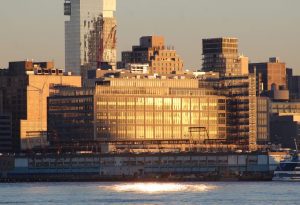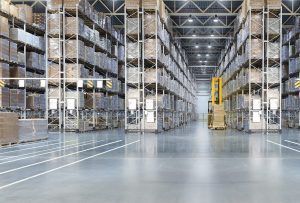The Past, The Present and The Future.
The near end of 2021.
It has been an interesting year. Tough, challenging, yet exciting and a buoyant investment market.
After starting the year in a lockdown it was difficult to envisage starting the following year in the same way – albeit a lockdown or circuit breaker has not formally been announced, it feels like it is heading in that direction.
In a festive manner, it is useful to look at the Past, Present and the Future, for commercial real estate investment in the UK. Salient trends are as follows:
PAST
During 2020, the year was full of lockdowns and uncertainty. Despite this, Blackstone acquired the Iq Student Housing portfolio, for £4.7bn in February, pre-lockdown. Blackstone acquired again in February on behalf of the Mileway platform, with the acquisition of the Hansteen portfolio, comprising approximately 250 industrial estates for a total value of £500m, which reflected a 7.50% yield. This now looks like excellent value.
As we entered lockdown measures in March 2020, a private Qatari investor acquired The Ritz, Piccadilly hotel building for £700m. AXA acquired the ‘Dolphin Portfolio’ the largest single private residential complex in the UK, comprising 1,233 units on a 7.5 acre site in London. This was acquired for £850m in September 2020.

It seems that ‘beds and sheds’ were still the investor favourite.
A breakdown analysis of the 2020 UK transactions is as follows:
| Sector | Number of Transactions | Total Value | Weighted Average Yield |
| Office | 607 | £14.925bn | 4.82% |
| Industrial | 698 | £9.384bn | 5.18% |
| Retail | 644 | £6.496bn | 5.99% |
| Leisure | 214 | £2.645bn | 4.79% |
| Alternative | 600 | £13.34bn | 4.46% |
| Mixed Use | 148 | £2.647bn | 4.14% |
The most active sector was industrial, followed by offices. The total value of transactions was highest with offices – despite the ‘death of the workplace’. At just shy of a 6% average weighted yield, retail (which does include retail warehousing) seemed to provide the most attractive returns.

PRESENT
On the 6th January, England entered a third national lockdown. This wasn’t the best start to the year after the previous stop-start year.
However, the year progressed in a positive manner following the start and is looking to end on a high – in terms of the overall market performance.
A breakdown analysis of the 2021 UK transactions is as follows:
| Sector | Number of Transactions | Total Value | Weighted Average Yield |
| Office | 596 | £18.404bn | 4.77% |
| Industrial | 860 | £14.851bn | 4.43% |
| Retail | 597 | £8.424bn | 6.23% |
| Leisure | 241 | £2.751bn | 6.41% |
| Alternative | 456 | £9.862bn | 5.06% |
| Mixed Use | 147 | £4.258bn | 4.73% |
The most active sector was industrial, and this sector also provided an increase of £5.5bn of added transactional values in comparison to 2020 and also a sharp decrease in the average weighted yield down from 5.18% (2020) to 4.43%.
The weighted yield for offices also came in (despite the ‘death of the workplace’) and the total value increased from 2020 to 2021 figures by around £3.5bn.

An interesting sector was retail in 2021. The total value of investment transactions increased by £2bn and the average weighted yield softened further out to 6.23% in 2021. Leisure was also pushed out to an average weighted yield of 6.41%, from 4.79% in 2020. The number of transactions however increased from 2020 leisure volumes and the total value of transactions was also up from 2020.
FUTURE
Whilst nobody has a crystal ball, this year will also be dictated in part by the latest Omicron outbreak. Will the country enter lockdown restrictions and if so for how long?
Whilst the various strains may continue to intermittently disrupt the market and the economy, this is short term. Unless an asset is being acquired for the purposes of a ‘flip’, then commercial real estate investment is often a medium to long term hold.
What are the ‘value picks’ for 2021?
- Offices – office assets are an obvious value pick. The arbitrage between prime industrial and UK regional offices is wide open. Offices in major regional cities (Multi-let, 5 year WAULT) average 5.75%, however, yields have pushed out towards double digit yields in some locations during 2021. Compared to prime industrial yields at 3.00%, this provides a good attractive option. ESG credentials are of interest to investors and the provision of flexibility within office buildings is desirable, to offer conventional office floor plates but also the option of flexible/collaborative working configuration is favoured. Google are taking 1.3 million square feet at Hudson Square, in New York, which is the centrepiece of the company’s “Googleplex” master plan that will encompass a grand total of 1.7 million square feet across three buildings. The HMRC will move in 9,000 employees in to their 460,000 sq ft Pilgrim Quarter office building in the North East, for the biggest letting in the region since Just Eat signed a lease at Rainton House in Sunderland, taking 217,339 sq ft in August 2021. Facebook have agreed to lease 312,000 sq ft of office space at 1 Triton Square, London. Allen and Overy have agreed to take 254,000 sqft office space on a pre-let with the intention of an early 2027 move date at 1-2 Broadgate, London. Recently, the DWP have signed the lease to take 215,000 sq ft at Talbot Gateway, Blackpool, for a term of 25 years with a proposed move-in date of H2 2022. Can Facebook, Google, HMRC, DWP and Allen and Overy all be wrong? We can’t work from home the rest of our careers – can we?

- Retail – E-commerce has been the biggest threat to bricks and mortar over the past 10 years and this is not changing any time soon. However, town centres are being re-purposed to integrate mixed use development. The high street in general has been diluted, or will be diluted, for it to perform better. Suburban retail has performed well during the lockdown restrictions and neighbourhood retail parades have shown resilience – which shouldn’t change. The butcher, baker and candlestick maker has often been replaced in part by a craft ale bar, coffee shop and artisan food shops and independent restaurants. High street retail in locations with limited supply/market competition are attractive, in addition to retail in tourist locations and strong university towns and cities. Then there is retail warehousing. This has well and truly kicked off in 2021 and will continue to perform well. Retail warehousing is popular due to the (general) generous free car parking provision, opportunity to allow for ‘click and collect’ platform occupiers, low site density allowing for additional development and the potential for alternative uses such as conversion to industrial or develop/re-develop for residential in parts or on the whole. Yields have however compressed very quickly in the retail warehousing sector in the past 12 months by up to 250 bps, so it is the secondary and tertiary locations – with good fundamentals – that can be acquired at an attractive level. The high street should also be considered, with each asset and location to be treated individually on their own merit. Long leases of 10 years can still be achieved, and the stand out occupiers will be highlighted post-eviction moratorium on the 25th March 2022, with those still standing and expanding to be a clear favourite for investors.

- Industrial and Logistics – this remains a stand out sector and will continue to thrive during 2022. There remains an overall under supply and any pipeline is often pre-let or at least 50% – 75% pre-let. Rental growth is still likely due to the supply and demand imbalance, however, it is important not to use a ‘broad-brush’ approach to assets. Not every industrial occupier can pay an Amazon level of rent, because the Amazon rents can be absorbed in their profitability and operational plan. A welder, car mechanic or microbrewery cannot all pay a rental increase that reflects a doubling (or more) in rent, as this will end in a negative outcome for both landlord and tenant – and we do not want to see a microbrewer absorbing a massive hike in rent, through a subsequent rise in the cost of a pint! Optimistic investment agents love to quote hot ERV evidence on a comprehensive PDF brochure, but it needs to be put in to context. Due diligence is key in this sector right now, as the market is changing each week and month, in terms of net effective rents and also the evolving high-tech build specification. If an investor gets it right, industrial and logistics appears to be a safe bet.

At Wildbrook CRE, we have enjoyed 2021 and look forward to 2022. In March 2022, it will be a 4 year anniversary of the business start date, and it has been an interesting 4 years with the ending of Brexit, change in Prime Minister, and an unforeseen global pandemic.
We wish all of our clients and fellow property professionals a Merry Christmas, but most importantly a healthy 2022.
Stay safe.
Neil Higson.


